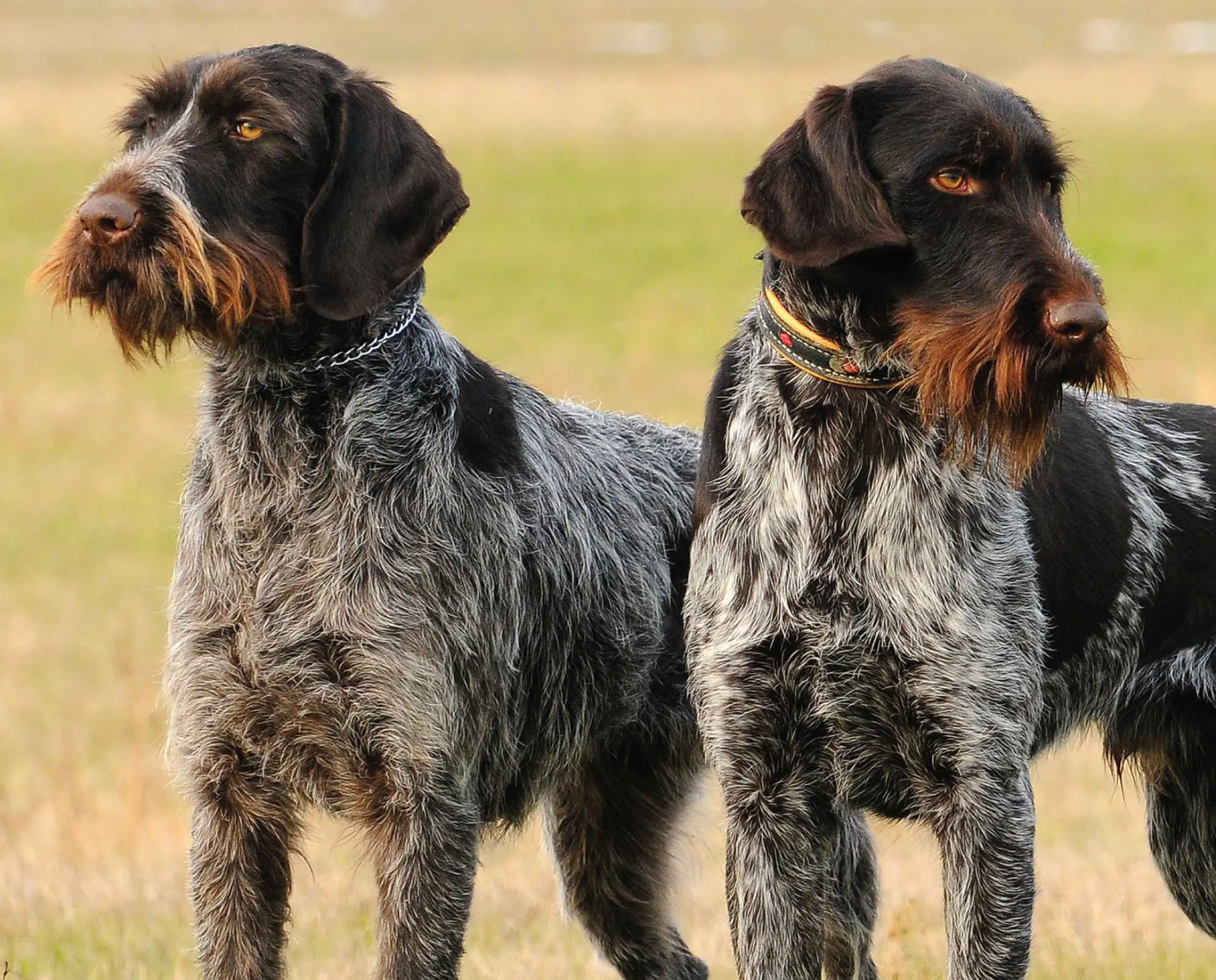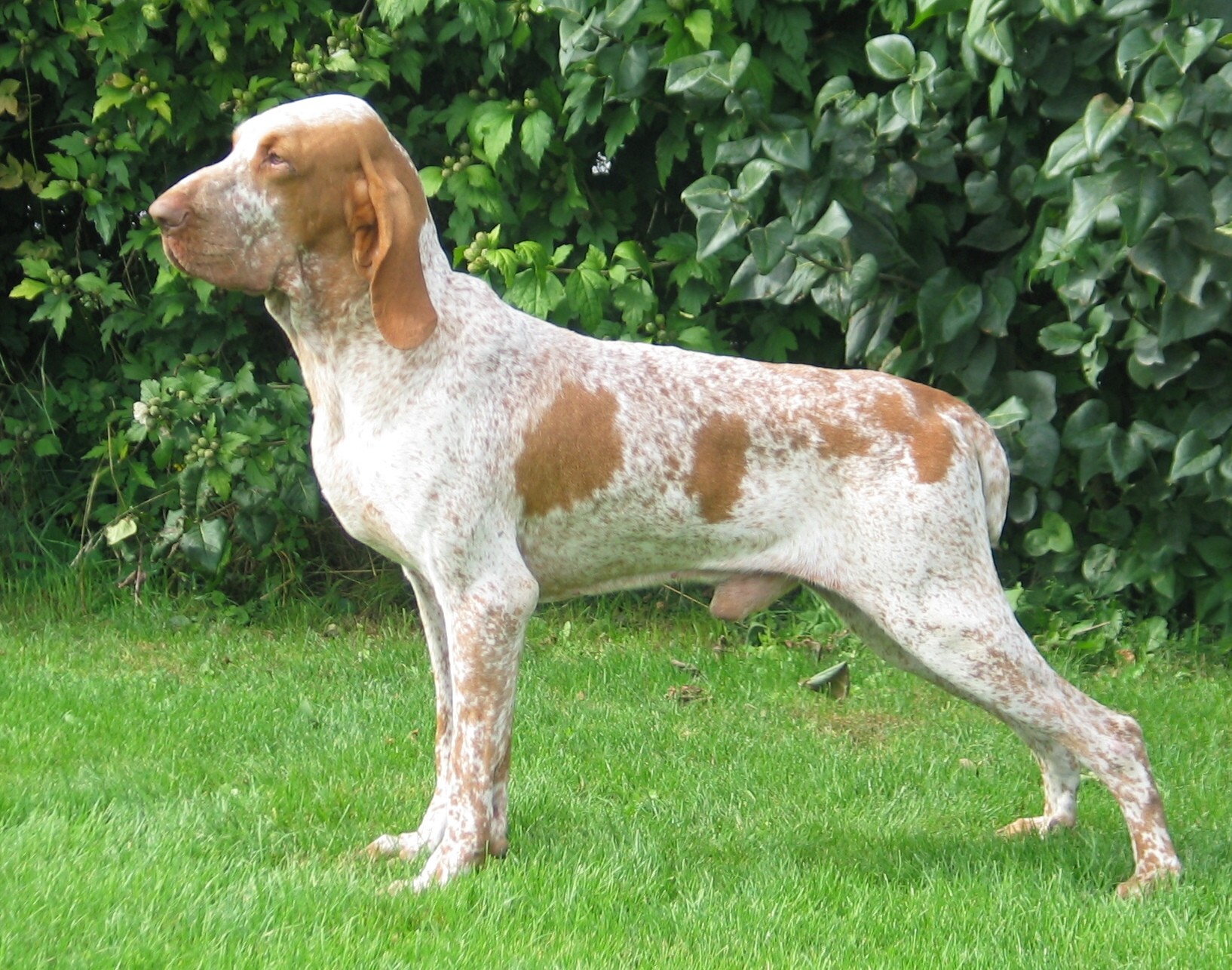Welcome to pawtrix.wiki, your one-stop location for everything about dogs! Today, we’re exploring one of the sporting world’s most versatile and beloved breeds – the German Shorthaired Pointer (GSP). With their distinctive speckled coats, athletic builds, and boundless energy, these dogs have earned a reputation as exceptional hunting partners and devoted family companions.
The All-Purpose Sporting Dog
While many hunting breeds specialize in one particular skill, the German Shorthaired Pointer proudly carries the title of “versatile hunting dog.” Developed to be a single-dog solution for German hunters, these remarkable canines can:
- Point upland game birds with statue-like precision
- Track wounded game with determination
- Retrieve from land and water with enthusiasm
- Hunt fur-bearing animals like rabbits and foxes
- Work in various terrains from dense forests to open fields
This versatility makes them the Swiss Army knife of hunting dogs – a distinction they maintain to this day in field trials, hunt tests, and actual hunting situations around the world.
A Distinguished History: From German Hunting Lodges to Global Fame
The German Shorthaired Pointer’s development traces back to 17th-century Germany, where hunters sought to create the perfect all-around hunting companion. The breed’s ancestry includes several pointing breeds, most notably the Old Spanish Pointer, combined with various German tracking hounds and the English Pointer.
By the late 1800s, the breed standard was established in Germany, focusing on creating dogs with superior scenting ability, intelligence, versatility, and the stamina to work tirelessly alongside hunters for entire days. Prince Albrecht zu Solms-Braunfels deserves particular credit for refining the breed to its modern form through his methodical breeding program.
The first GSPs arrived in the United States in the 1920s, and the American Kennel Club recognized the breed in 1930. Their popularity steadily grew as American hunters discovered their exceptional versatility in the field and their adaptability as family companions at home.
Physical Characteristics: Built for Performance
The German Shorthaired Pointer’s appearance clearly reflects its working heritage – every aspect of their physicality is designed for endurance, agility, and hunting prowess:
Size and Structure
- Males: 23-25 inches at the shoulder, 55-70 pounds
- Females: 21-23 inches at the shoulder, 45-60 pounds
- Build: Athletic and well-muscled without bulk
- Profile: Slightly longer than tall, with a level topline
- Chest: Deep but not too broad, providing lung capacity without limiting movement
Distinctive Features
- Head: Clean-cut with intelligent expression
- Ears: Broad and set high, hanging close to the head
- Muzzle: Strong and deep for retrieving game
- Tail: Traditionally docked to about 40% of natural length in countries where legal
- Feet: Webbed for swimming efficiency
Coat and Colors
The GSP’s short, dense coat requires minimal maintenance while providing some protection in varied terrain:
- Liver and white: Most common, appearing as solid liver, liver roan, liver and white spotted, or liver and white patched
- Black and white: Less common but recognized, in same patterns as liver
- Solid liver: No white markings, less common
- Texture: Harsh and flat-lying, weather-resistant
One of the most recognizable GSP patterns is the ticked or roan pattern, where fine spots of color appear on a white background, creating a speckled appearance.
The GSP Personality: Energy Meets Intelligence
German Shorthaired Pointers combine boundless energy with keen intelligence, creating a dog that’s both highly trainable and endlessly entertaining:
Key Personality Traits
- Endless Energy GSPs are perpetual motion machines, rarely slowing down before middle age. Their energy level is legendary even among sporting breeds, making them ideal for active families but challenging for sedentary households.
- High Intelligence Consistently ranked among the smartest dog breeds, GSPs can learn complex tasks, solve problems, and master advanced training concepts. This intelligence needs direction, however, or it can lead to trouble.
- Devoted Attachment These dogs form intense bonds with their families, often becoming “velcro dogs” who follow their people from room to room. They thrive on inclusion in family activities and can suffer from separation anxiety if regularly left alone for long periods.
- Playful Throughout Life GSPs maintain their playful, sometimes goofy nature well into adulthood. Many owners report their senior GSPs still engaging in puppy-like antics, bringing joy to the household even after their hunting days are done.
- Natural Vigilance While not aggressive, GSPs make excellent watchdogs, alerting to unusual activity and approaching strangers with reserved caution until properly introduced.
Training and Exercise: A Commitment to Excellence
Owning a German Shorthaired Pointer means committing to significant exercise and consistent training throughout the dog’s life:
Exercise Requirements
- Daily needs: 1-2 hours minimum of vigorous exercise
- Variety: Running, swimming, hiking, playing fetch
- Mental stimulation: Training, puzzle toys, scent games
- Purpose: Structured activities that fulfill hunting instincts
Without adequate exercise, GSPs can become destructive, anxious, and difficult to live with. These dogs are not suited to a sedentary lifestyle and cannot be expected to adapt to minimal exercise routines.
Training Approach
GSPs respond best to:
- Early and consistent socialization
- Positive reinforcement methods
- Clear boundaries and expectations
- Varied, engaging training sessions
- Tasks that challenge both body and mind
While highly trainable, GSPs are independent thinkers who may challenge authority or become bored with repetitive tasks. The best training programs keep them engaged by incorporating their natural hunting abilities and problem-solving tendencies.
Health Considerations: Active for a Lifetime
German Shorthaired Pointers are generally healthy dogs with a life expectancy of 12-14 years. As with all purebred dogs, they do have some breed-specific health concerns to monitor:
Common Health Issues
- Hip dysplasia: Joint malformation leading to arthritis
- Cancer: Various types more prevalent in GSPs
- Bloat/Gastric torsion: Life-threatening stomach condition
- Epilepsy: Seizure disorders
- Eye disorders: Including progressive retinal atrophy
- von Willebrand’s Disease: Blood clotting disorder
- Hypothyroidism: Underactive thyroid gland
Preventative Care
Responsible GSP ownership includes:
- Regular veterinary check-ups
- Appropriate weight management
- Joint supplements for active dogs
- Bloat prevention strategies
- Knowledge of cancer warning signs
- Exercise moderation during growth periods
Family Integration: The GSP at Home
Despite their hunting heritage, properly exercised and trained GSPs make wonderful family companions:
With Children
- Generally excellent with older, respectful children
- May be too boisterous for toddlers or small children
- Need supervision due to energy level and size
- Often protective and patient with “their” kids
With Other Pets
- Variable with cats – early socialization helps
- Generally good with other dogs with proper introduction
- Strong prey drive may make them unsafe with small pets
- Can learn to respect household boundaries
Home Environment
- Need secure fencing (they can jump and climb)
- Benefit from a yard but can adapt to urban living with sufficient exercise
- May not be ideal for apartments unless owner is extremely committed
- Thrive in active households
Grooming and Care
One advantage of GSPs is their minimal grooming needs:
- Short coat requires only occasional brushing
- Bathe only when necessary
- Regular nail trimming
- Ear cleaning to prevent infections
- Moderate shedding year-round
The Working GSP: Talents Beyond Hunting
While hunting remains their primary working purpose, today’s GSPs excel in numerous other activities:
Dog Sports
- Field trials: Competitive bird finding
- Hunt tests: Standardized hunting skills evaluation
- Agility: Natural athleticism translates well
- Dock diving: Many love water activities
- Nose work/scent detection: Utilizing their scenting abilities
- Obedience and rally: Structured competitive obedience
Service and Working Roles
With their intelligence and work ethic, properly selected GSPs serve as:
- Search and rescue dogs
- Detection dogs (narcotics, explosives)
- Therapy dogs (with appropriate temperament)
- Assistance dogs for certain applications
Finding Your GSP: Making the Right Match
If you’re considering adding a German Shorthaired Pointer to your family, you have two primary options:
Reputable Breeders
Look for:
- Health testing (hips, eyes, genetic screening)
- Temperament evaluation
- Working titles or hunting ability
- Socialization practices
- Support throughout the dog’s life
Questions to ask potential breeders:
- What health tests do you perform?
- How do you socialize puppies?
- What are the energy levels of your dogs?
- Do you hunt with your dogs or compete in field events?
- What support do you provide after purchase?
GSP Rescue
Consider rescue when:
- You’re open to an adult dog
- You understand potential adjustment periods
- You’re prepared for possible behavioral challenges
- You want to provide a second chance
Many GSPs end up in rescue when owners underestimate their exercise needs or hunting drive. Rescue organizations can often match you with a dog whose energy level and temperament fit your lifestyle.
Is a GSP Right for You?
The German Shorthaired Pointer is an exceptional breed but not suited for every household. Consider a GSP if:
- You lead an active, outdoor lifestyle
- You can provide 1-2 hours of exercise daily
- You enjoy training and working with your dog
- You have secure fencing
- You want an enthusiastic companion for hiking, running, or other activities
- You appreciate intelligence and problem-solving in a dog
Consider another breed if:
- You cannot provide significant daily exercise
- You work long hours away from home
- You prefer a calm, low-energy household
- You’re a first-time dog owner seeking an easy starter dog
- You have very young children who might be knocked over
- You have small pets like rabbits or hamsters
Living the GSP Life: Owner Perspectives
GSP owners consistently report both challenges and rewards. Common themes include:
The Challenges
- “There’s no such thing as a tired GSP, only a resting one.”
- “My vacuum cleaner works overtime with the shedding.”
- “I can’t remember what it’s like to use the bathroom alone – my GSP follows me everywhere.”
- “We had to install taller fences after discovering our GSP could jump over the old ones.”
The Rewards
- “There’s no better hiking companion – they’re always ready for adventure.”
- “The bond is like nothing I’ve experienced with other breeds.”
- “Watching them point birds for the first time is magical.”
- “They seem to understand exactly what you’re thinking before you say it.”
GSP vs. Other Pointing Breeds: Making Comparisons
How do GSPs compare to similar sporting breeds?
German Shorthaired Pointer vs. English Pointer
- GSPs are more versatile (tracking, retrieving)
- English Pointers often have higher specialization for upland birds
- GSPs typically have stronger water retrieving skills
- English Pointers may have a calmer home demeanor
GSP vs. Vizsla
- Similar versatility and energy levels
- Vizslas often more sensitive and velcro-like
- GSPs generally more independent in the field
- Vizslas typically have more separation anxiety
GSP vs. German Wirehaired Pointer
- Same versatile hunting abilities
- Wirehairs have rough coat for harsher conditions
- Wirehairs often more assertive/stubborn
- GSPs typically more popular as family pets
Conclusion: The Timeless Appeal of the GSP
The German Shorthaired Pointer represents a remarkable balance of working ability and companionship. For active owners willing to meet their considerable needs, these dogs offer unparalleled versatility, intelligence, and devotion.
From the hunting fields of 17th-century Germany to today’s diverse sporting competitions and family homes, the GSP continues to excel at everything asked of it. Their distinctive appearance, athletic prowess, and engaging personality have earned them a dedicated following among sportsmen and active families alike.
At pawtrix.wiki, we believe in matching the right dog with the right home. For those with the energy, commitment, and lifestyle to match this remarkable breed, the German Shorthaired Pointer offers a partnership of adventure, loyalty, and joy that few other breeds can equal.
Whether you’re considering your first GSP or are already part of the devoted GSP community, we hope this guide has provided valuable insights into these exceptional sporting dogs. Remember, a well-exercised GSP is a joy to live with – meet their needs, and they’ll reward you with a lifetime of enthusiasm, intelligence, and unwavering companionship.




